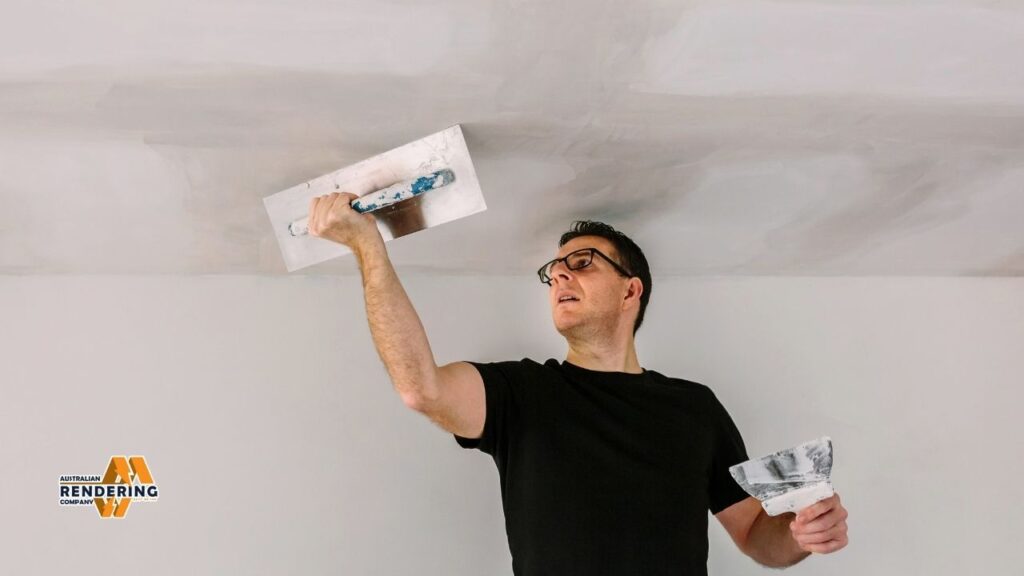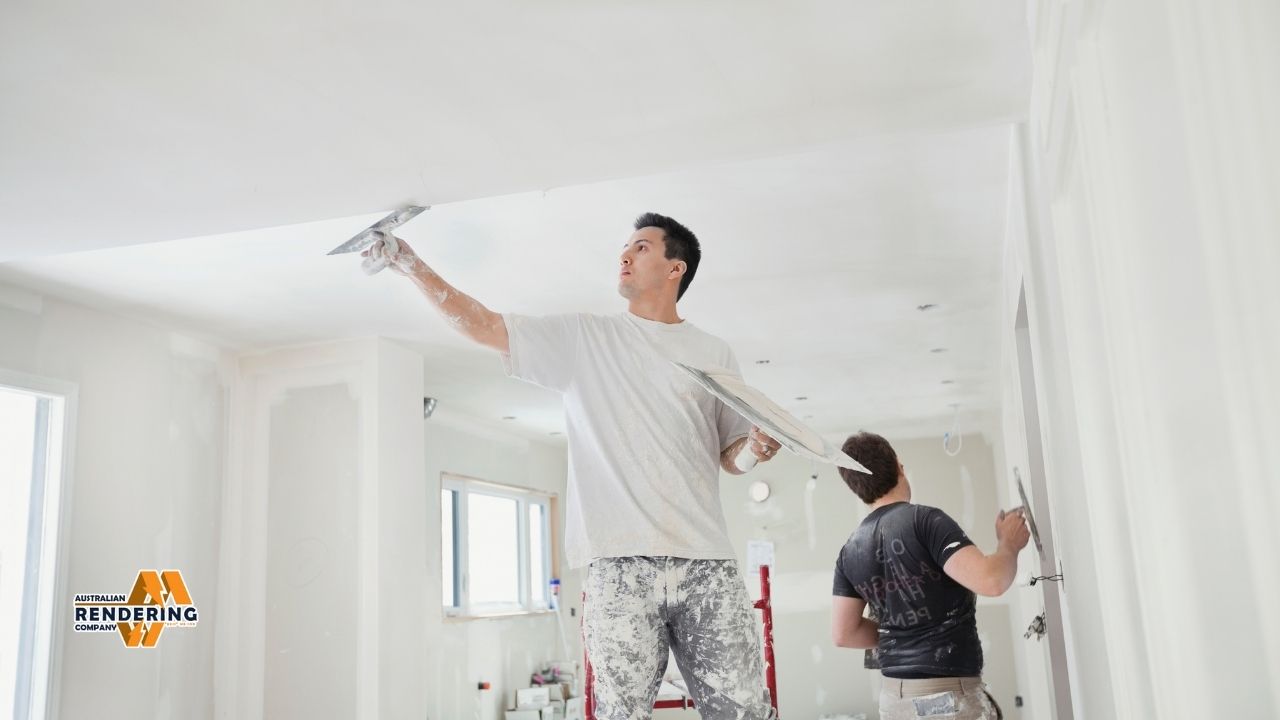Interior wall rendering is essentially a brand-new covering applied directly to your inside walls. It’s a blend of materials that artisans spread on your walls to achieve a smooth, durable, and aesthetic surface. It helps to conceal rough spots, protects from damages, and beautifies your house.
What is Internal Rendering?
Internal rendering is the application of a special mix on the internal walls of a house or block. This mortar, known as render, is typically composed of a mixture that includes cement, sand, lime, and water. Render creates a firm, uniform surface upon drying. It acts as a second skin for your walls.

Why Use Internal Rendering?
- Smooth Walls: Render makes walls smooth, which makes it easier to paint or hang wallpaper.
- Fortress Walls: Render ensures that walls learn to withstand bumps and scratches.
- Contemporary Appearance: Render gives stone walls a modern twist.
- Conceals Imperfections: Rendering masks cracks and rough patches.
- Provides Insulation: Render helps your home stay warm in winter and cool in summer.
Advantages of Interior Wall Rendering
So, rendering interior walls, the advantages are never limited to just aesthetics. It prevents water ingress, reduces bug entry, and can even help in soundproofing your home when spruced up properly with render.
- Weatherproofing: Render repels water from your walls and, subsequently, helps mitigate mold growth.
- Pest Control: Render prevents bugs from entering your home through the walls.
- Noise Reduction: Render helps reduce outside noise, making your house a more tranquil environment.
- Resistance to Fire: A few kinds of render can assist with hindering the spreading of flames.
Is Internal Wall Rendering Possible?
Yes, you can seal render internal walls. Any house can usually have render applied to its interior walls. It works upon brick, concrete, as well as particular wooden surfaces. Of course, it means your walls are ready for render but needs to be checked. Walls should be clean and dry, the surface must not fall off when pressing, so that the render can stick to it.
Is it Possible to Render the Internal Brick Walls?
One of the most popular uses is actually rendering interior brick walls. Brick walls are hard and perform well with render. To be clear, brick walls, like all walls, need to be properly prepped first. This involves cleaning them and repairing any major cracks or holes. With over 30 years of experience, Australian Rendering Company offers services to prepare brick walls for internal rendering, resulting in a quality, smooth and stable finish. They can be reached by calling 0466 943 872 or via email at contact@australianrenderingcompany.com.au for those in Melbourne in need of help.
How to Render Interior Walls
Rendering of internal walls is work for someone who knows what they are doing and a trade you should leave to the professionals. Doing it right takes some practice and some special tools. Here’s a simple overview:
- Preparing the Walls: Thorough cleaning – fill in all the cracks.
- Mix the Render: Mix the cement, lime, sand and water to make the render.
- Apply Render: Place the render on the wall and multilayer it by making it smooth.
- Dry it Off: Let the render dry out fully before proceeding.
- Finalize the Wall: Give the wall a coat of paint or wallpaper to ensure it looks its best.
Tools You’ll Need
- Mixing tub
- Trowel
- Hawk
- Level
- Float
Types of Internal Render
Every internal render comes with its high points. Some are more suited towards wet rooms such as bathrooms, whilst others are more appropriate for living rooms or bedrooms.
- Cement Render: This is durable and suitable for areas with water exposures.
- Lime Render: Helps walls breath and prevent mold.
- Gypsum Render: This provides a really smooth finish to the walls and is suitable for painting.
- Acrylic Render: Flexibility, water resistance, well-looking modern finish and crack fixing.
Internal Render Finishes
These are the finishes you can give the render once it has dried, internally. You may slick it, roughen it or even impregnate it with patterns. Which finish you select depends on your desired style for your room.
- Smooth: It is a flat and uniform surface which does not require any masking and gives an easy paint over it.
- Textured: A surface that invites to touch, rough or bumpy.
- Special Tooling and Finish: This is referred to as decorative finish or textured finish, where special tools are used to create patterns in the render.
Does it Work for Interior Walls: Rendering
There are many reasons which compel us to ask the question is rendering good for internal walls? It provides shelter for the walls and beautifies them, and it can also assist in heating and cooling. Rendering is a great way to improve your home.
Rendering Inside Walls
Rendering internal walls can change the feel of your house entirely. It tends to give the impression of it being new, tidy and chic. An idea to think about if you are renovating, render your inside walls.
What is the better internal render for bathroom use?
Cement render is a popular choice for bathrooms as it is durable and holds up well when wet. Another option that is breathable and also helps reduce mold, which is also important in bathrooms, is lime render.
How would the duration of internal rendering be verified?
If performed properly and maintained as it should be, internal rendering should last for many years, even decades. The length of time it lasts will vary depending on the type of render used, the quality of the application, and the conditions inside the house.
Can I Paint Over The Internal Rendering?
Yes. Actually, in fact, painting is a common method of finishing rendered walls. Ensure that the render is completely dry before painting and use a primer so the paint adheres well.
Does internal rendering aid in insulation?
Yes, internal rendering does assist with insulation. The wall is also thicker due to the layer of render on the outside, so the thermal mass can help keep heat inside during the winter and outside during the summer. This will help make your home more comfortable, and can save you money on your energy bills.
What is the cost of internal rendering?
Interior wall rendering cost varies based on several factors; the size of the area, the type of render, and the labour costs in your area. We suggest that you get quotes from a few rendering companies to gauge the cost.
Is it possible for me to plaster interior walls?
It is possible to plaster interior walls yourself, but it takes skill and patience. If you are not confident doing this type of work, it is best to hire a professional renderer to get a good finish.




